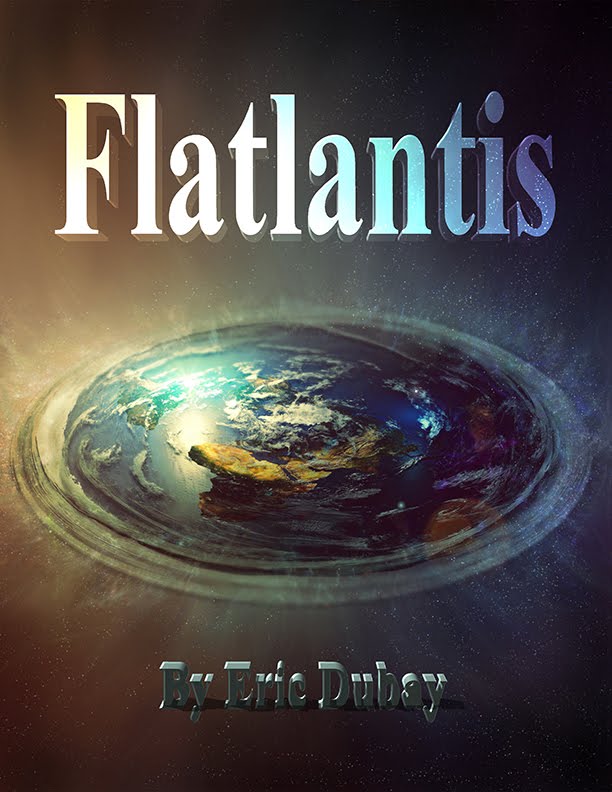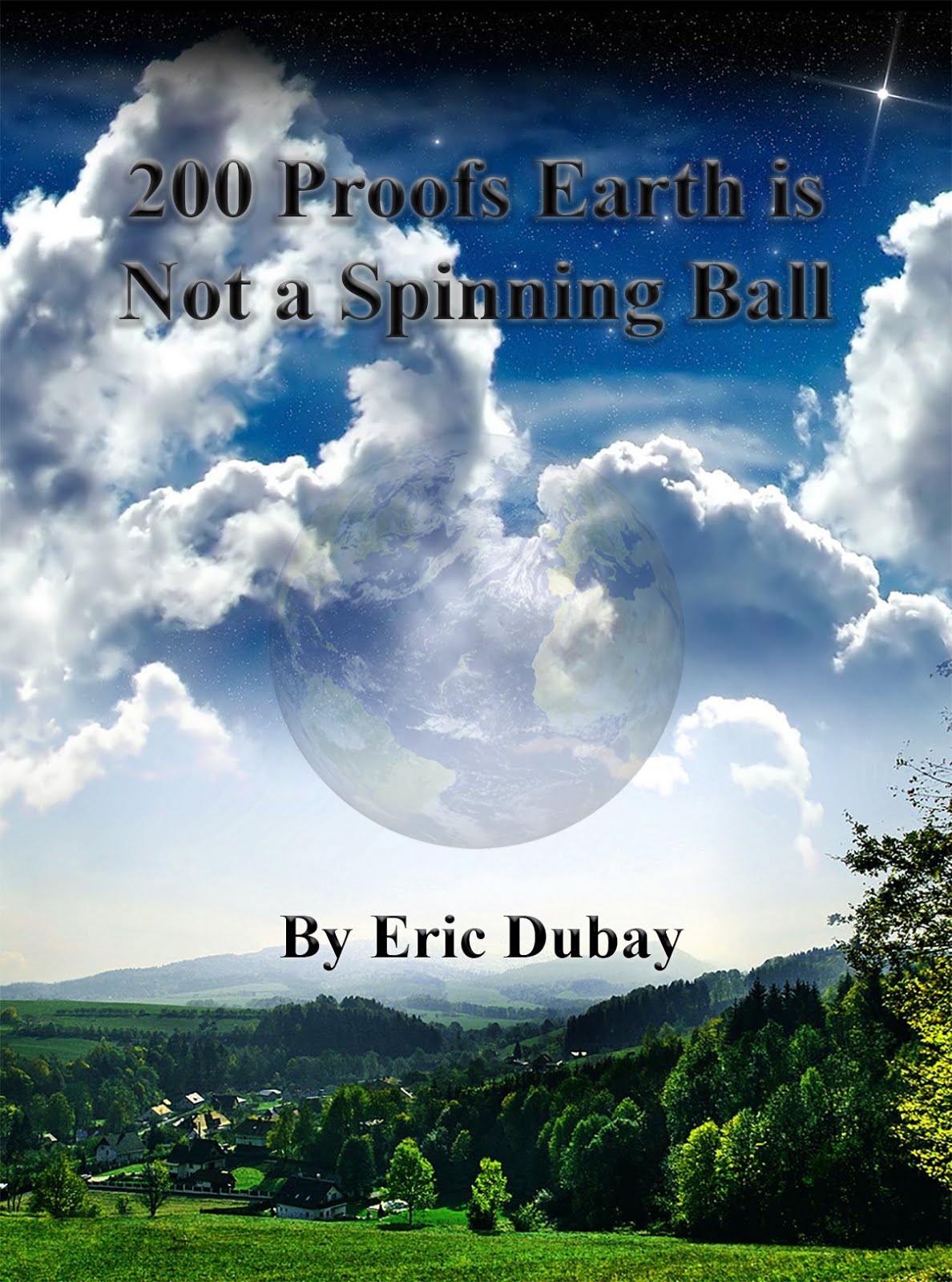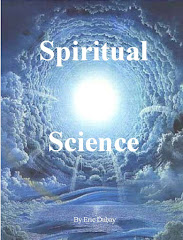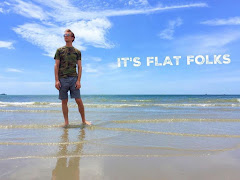Friday, December 31, 2021
Polar Astronomy and Anthropology
The North Pole is the inherent geographical focal point of all creation. It is the perfect center of the bullseye, the magnetic attractor of all the world's compasses, the originator of all the world's tides, and home to the only motionless star in the heavens, around which all the other stars, the Sun, and the Moon revolve. In ancient times it was also claimed to be home to the tallest mountain and the tallest people on Earth. As recently as the 19th century, explorers like Olaf Jansen have continued telling so-called "tall tales" of meetings with races of giant human beings who live at the Pole.
In his book "The Smoky God," Olaf Jansen claimed to have journeyed to the North Pole with his father in 1829 where they met and mingled 2 years with a race of 12 foot tall giants who lived up to 800 years, spoke a language similar to Sanskrit, and inhabited a paradisical capital city named "Eden." This particular story is most likely a piece of fiction, but echoes a long-standing tradition of similar claims that the North Pole is or was once home to a paradisical Edenic abode inhabited by races of gigantic and/or miniature human beings.
In Heylin's 1659 book "Cosmographie," he states that on the North of Lappia and Biarmia, near the Pole, lives a race of Pygmies, the tallest of which are not above four feet high. Gerardus Mercator's 1595 polar map includes this island of Pygmies with a caption mentioning their tiny four-foot stature. Johannes Ruysch's 1508 world map also shows the many surrounding polar islands claiming 2 of them inhabited, but without mentioning the alleged inhabitant's size or stature. In the book "Gesta Hammaburgensis Ecclesiae Pontificum," Archbishop Adalbert's team of Frisian explorers told of encountering giant human beings living in caves and underground hollows during their 1035 Polar expedition.
In ancient Greek and Roman texts from Pindar, Herodotus, Hesoid and Homer, to Virgil and Cicero, it was universally claimed that the North Pole was home to a race of giants called the "Hyperboreans" who lived for over a thousand years and enjoyed lives of perfect happiness. Hyperborea was allegedly bathed in 24 hour sunlight with the Sun only ever rising or setting once every year! Pliny the Elder wrote in his Natural History book IV that, "The farthest of all, which are known and spoke of, is Thule; in which there be no nights at all, as we have declared, about mid-summer, namely when the Sun passes through the sign Cancer; and contrariwise no days in mid-winter: and each of these times they suppose, do last six months, all day, or all night."
For observers standing at the Pole, the heavens would appear to have been created just for them. Their unique perspective places Polaris, the only motionless star in the sky, perfectly situated directly above them, with all the other visible stars rotating horizontal left to right paths 360 degrees around, all at an apparently equal distance away. The Sun and Moon also rotate horizonally around the polar observer, with the Sun rising and setting only once per year, creating 6 month days and 6 month nights!
"If an observer is stationed at the North Pole, the first thing that will strike him is the motion of the celestial sphere above his head. Living in the temperate and tropical zones we see all heavenly objects rise in the east and set in the west, some passing over our head, others traveling obliquely. But to the man at the Pole, the heavenly dome above will seem to revolve round him, from left to right, somewhat like the motion of a hat or umbrella turned over one’s head. The stars will not rise and set, but will move round and round, in horizontal planes, turning like a potter’s wheel, and starting on a second round when the first is finished, and so on, during the long night of six months. The sun, when he is above the horizon for 6 months, would also appear to revolve in the same way. The centre of the celestial dome over the head of the observer will be the celestial North Pole, and naturally enough his north will be over-head, while the invisible regions below the horizon would be in the south." -Lokamanya Bal Gangadhar Tilak, “The Arctic Home in the Vedas” (42)
For polar observers the Sun rises in the South, not the East, and circles horizontally around rising ever so slightly in the sky, about a quarter degree per day. This creates an extended morning twilight with its brilliant colors which instead of lasting for the usual 45 minutes, lasts around 45 days! Every year at the spring equinox, after a long winter night, dawn begins to break and the first traces of the Sun creep above the horizon. By summer solstice the Sun reaches its highest point in the polar sky, around 23.5 degrees, and begins its slow, almost imperceptible descent. At the autumnal equinox, the last traces of the Sun disppear beyond the horizon, and an extended evening twilight persists for a month and half, after which the polar observer will not see sunlight again until spring. Thanks to abundant starlight, regular aurora borealis activity, and two weeks of moonlight per month, the long polar nights are not pitch black, but actually quite well lit and beautiful.
"We have stated that to an observer at the North Pole, there will be a night of 6 months, and one is likely to infer therefrom that there will be total darkness at the Pole for one half the portion of the year. Indeed one is likely to contemplate with horror, the perils and difficulties of a long night of six months, during which not only the light but the warmth of the sun has to be artificially supplied. As a matter of fact, such a supposition is found to be erroneous. First of all, there will be the electric discharges, known as Aurora Borealis, filling the polar night with their charming glories, and relieving its darkness to a great extent. Then we have the moon, which, in her monthly revolution, will be above the polar horizon for a continuous fortnight, displaying her changing phases, without intermission, to the polar observer. But the chief cause, which alleviates the darkness of the polar night, is the twilight before the rising and after the setting of the sun. The dawn in the tropical or the temperate zone is but brief and evanescent, and it recurs after every 24 hours. But still it has formed the subject of poetical descriptions in different countries. If so, how much more the spectacle of a splendid long dawn, after a darkness of two months, would delight the heart of a Polar observer, and how he will yearn for the first appearance of the light on the horizon." -Lokamanya Bal Gangadhar Tilak, “The Arctic Home in the Vedas” (44-46)
In all, a year at the Pole sees approximately six months of continuous daylight, followed by a month and a half of evening twilight, then three months of relative darkness, ending in a month and half long spring dawn. The exact number of days for each portion of the polar year is disputed among various authorities, however, which raises the question again as to whether or not modern man truly has attained the Pole. If we have research bases and encampments built all over at and around the North Pole as claimed, why is there not a single video online or anywhere else showing a year-long continuous time-lapse of this world wonder!? To see Polaris unmoving directly 90 degrees overhead while all the other stars rotate horizontally around uninterrupted by sunlight for months at a time, then to watch the first rays of the longest, most beautiful dawn lighting the horizon and revolving 360 degrees around without setting for many more months, would be an absolute spectacle to behold, worthy of an Imax documentary, and a true wonder of the world, but somehow no such video exists.
“First of all appears low in the horizon of the night-sky a scarcely visible flush of light. At first it only makes a few stars’ light seem a trifle fainter, but after a little it is seen to be increasing, and to be moving laterally along the yet dark horizon. Twenty-four hours later it has made a complete circuit around the observer, and is causing a larger number of stars to pale. Soon the widening light glows with the luster of ‘Orient pearl.’ Onward it moves in its stately rounds, until the pearly whiteness burns into ruddy rose-light, fringed with purple and gold. Day after day, as we measure days, this splendid panorama circles on, and, according as atmospheric conditions and, clouds present more or less favorable conditions of reflection, kindles and fades, kindles and fades, — fades only to kindle next time yet more brightly as the still hidden sun comes nearer and nearer his point of emergence. At length, when for two long months such prophetic displays have been filling the whole heavens with these increscent and revolving splendors, the sun begins to emerge from his long retirement, and to display himself once more to human vision. After one or two circuits, during which his dazzling upper limb grows to a full-orbed disk, he clears all hill-tops of the distant horizon, and for six full months circles around and around the world’s great axis in full view, suffering no night to fall upon his favored home-land at the Pole. Even when at last he sinks again from view he covers his retreat with a repetition of the deepening and fading splendors which filled his long dawning, as if in these pulses of more and more distant light he were signaling back to the forsaken world the promises and prophecies of an early return.” -Dr. William Warren
You would think such a sight would be worthy of recording, yet somehow, no one in history has ever bothered to do so. If we have truly attained the North Pole and have permanent and semi-permanent structures with people stationed at and around there year-round, why in the flat world has no one ever recorded an annual time-lapse of this incredible occurance?
The polar 6 month day and 6 month night has been written about by diverse cultures throughout history, many insisting that their ancestors or gods were the original inhabitants. In the ancient Indian Vedas, the "day of the gods," and "night of the gods," were each six months in duration, and their gods lived atop Mount Meru at the North Pole. The Surya Siddhanta XII, 67 states that "At Meru, Gods behold the sun after but a single rising during the half of his revolution beginning with Aries," and the Institutes of Vishnu says, "The southern progress of the sun is (with them) a night and a year is (with them) a day and a night." In Norse mythology, it is claimed that before the present established order of the world, their Sun rose in the South, which is what would have been experienced by their polar ancestors. In ancient Iranian mythology, Yima, the first man and King of the Golden Age lived in an Edenic abode called Vara, where the Sun only rose and set once per year.
"A phenomenon like this cannot fail to be permanently impressed on the memory of a Polar observer, and it will be found later on that the oldest traditions of the Aryan race have preserved the recollection of a period, when its ancestors witnessed such wonderful phenomenon, — a long and continuous dawn of several days, with its lights laterally revolving on the horizon, in their original home." -Lokamanya Bal Gangadhar Tilak, “The Arctic Home in the Vedas” (46-7)
The heavenly dome rotating perfectly horizontally overhead for polar observers is another unique peculiarity of polar astronomy found in ancient mythology. In Greek mythology, the gods rule from Mount Olympus and as the Iliad states, "from the upper sky, the celestial dome in which sun, moon and stars wheel silently around the Pole." In the Vedas, Indra "supports the heavens as on a pole," and "upholds heaven and earth, and turns the widest expanse, as the wheels of a chariot are held by the axle." An imaginary line from the North Pole to Polaris, would appear perfectly vertical and like a handle supporting the twirling umbrella of the heavens, or an axis supporting the wheel of a chariot.
"If we combine the two statements, that the heavens are supported as on a pole and that they move like a wheel, we may safely infer that the motion referred to is such a motion of the celestial hemisphere as can be witnessed only by an observer at the North Pole. In the Rig-Vedas I, 24, 10 the constellation of Ursa Major (Rikshah) is described as being placed “high” (uchhâh), and, as this can refer only to the altitude of the constellation, it follows that it must then have been over the head of the observer, which is possible only in the Circum-Polar regions." -Lokamanya Bal Gangadhar Tilak, “The Arctic Home in the Vedas” (60-1)
In the Mahabharata, during Arjuna's visit to Mount Meru, chapters 163 and 164 of the Vanaparvan state that, "At Meru, the sun and the moon go round from left to right every day, and so do all the stars. The day and the night are together equal to a year to the residents of that place." The ancient Laws of Manu I, 67 state, "A human year is a day and a night of the Gods; thus are the two divided, the northern passage of the sun is the day and the southern the night." And the Taittiriya Brahmana says, "That which is a year is but a single day of the Gods."
In the collection of ancient Zoroastrian texts known as the "Avesta," the Aryan Paradise, known as "Airyana Vaêjo" is described as a blissful place where the Sun rose only once per year and was destroyed by relentless snow and ice forcing the inhabitants, Earth's original progenitors, to migrate southwards. This same idea that the first humans devolved from God or gods at the North Pole is replete within ancient scriptures, and starkly contrasts modern mainstream claims that the first humans evolved from primates in Africa.
Two excellent books were written on this subject, one by Boston University president and professor Dr. William Warren entitled, "Paradise Found: The Cradle of the Human Race at the North Pole," and another by the renouned Indian teacher and activist Lokamanya Bal Gangadhar Tilak entitled, "The Arctic Home in the Vedas." In both well-researched publications Warren and Tilak present convincing arguments with abundant supporting evidence suggesting that our most ancient ancestors lived at the North Pole and spread outwards southwards from there likely due to climate changes.
"Our hypothesis calls for an antediluvian continent at the Arctic Pole. It is interesting to find that a writer upon the Deluge writing more than forty years ago advanced the same postulate. Is the supposition that there existed such a continent scientifically admissible? Until very recently too little was known of the geology of the high latitudes to warrant or even to occasion the discussion of such a question. Even now, with all the contemporary interest in Arctic exploration, it is difficult to find any author who has distinctly propounded to himself and discussed the question as to the geologic age of the Arctic Ocean. It will not be strange, therefore, if we have here to content ourselves with showing, first, that geologists and paleontologists do not think the present distribution of Arctic sea and land to be the primeval one ; and secondly, that in their opinion, incidentally expressed, a 'continent' once existed within the Arctic Circle of which at present only vestiges remain. Mr. Alfred Russel Wallace incidentally shows that the facts of Arctic paleontology call for the supposition of a primitive Eocene continent in the highest latitudes, a continent which no longer exists. His language is, 'The rich and varied fauna which inhabited Europe at the dawn of the Tertiary period as shown by the abundant remains of mammalia wherever suitable deposits of Eocene age have been discovered proves that an extensive Palearctic continent then existed.' Another most eminent authority in Arctic paleontology, the late Professor Heer, of Zurich, fully fifteen years ago arrived at and published the conclusion that the facts presented in the Arctic fossils plainly point to the existence in Miocene time of a no longer existing polar continent. On another and more lithological line of evidence Baron Nordenskjold, the eminent Arctic explorer, has arrived at the same conclusion. Speaking of certain rock strata north of the 68th degree of north latitude, he says, 'An extensive continent occupied this portion of the globe when these strata were deposited.' Elsewhere he speaks of this 'ancient polar continent' as something already accepted and universally understood among scientific men." -William Warren, “Paradise Found: The Cradle of the Human Race at the North Pole” (73)
"It has been already stated that the beginnings of Aryan civilization must be supposed to date back several thousand years before the oldest Vedic period; and when the commencement of the post-Glacial epoch is brought down to 8000 B.C., it is not at all surprising if the date of primitive Aryan life is found to go back to it from 4500 B.C., the age of the oldest Vedic period. There are many passages in the Rig-Veda, which, though hitherto looked upon as obscure and unintelligible, do, when interpreted in the light of recent scientific researches, plainly disclose the Polar attributes of the Vedic deities, or the traces of an ancient Arctic calendar; while the Avesta expressly tells us that the happy land of Airyana Vaêjo, or the Aryan Paradise, was located in a region where the sun shone but once a year, and that it was destroyed by the invasion of snow and ice, which rendered its climate inclement and necessitated a migration southward. These are plain and simple statements, and when we put them side by side with what we know of the Glacial and the post-Glacial epoch from the latest geological researches, we cannot avoid the conclusion that the primitive Aryan home was both Arctic and inter Glacial. The discovery of the intimate relationship between Sanskrit and Zend on the one hand and the languages of the principal races of Europe on the other, a complete revolution took place in the views commonly entertained of the ancient history of the world. It was perceived that the languages of the principal European nations — ancient and modern — bore a close resemblance to the languages spoken by the Brahmans of India and the followers of Zoroaster; and from this affinity of the Indo-Germanic languages it followed inevitably that all these languages must be the off-shoots or dialects of a single primitive tongue, and the assumption of such a primitive language further implied the existence of a primitive Aryan people." -Lokamanya Bal Gangadhar Tilak, “The Arctic Home in the Vedas” (1-2)
In 1786 Sir William Jones, a Supreme Court judge who could speak 30 languages, gave his Third Anniversary Discourse to the Asiatic Society where he declared that the similarities between Sanskrit, Greek, Latin, German, Celtic and Persian languages could only be explained on the hypothesis that they all shared a common parentage. His contemporary, the German philosopher Hegel, compared the consequences of Jones' revelation to the discovery of a whole new world and his ground-breaking work on this subject established him as the founder of comparative linguistics. Jones wrote that, "The Sanscrit language, whatever be its antiquity, is of a wonderful structure; more perfect than the Greek, more copious than the Latin, and more exquisitely refined than either, yet bearing to both of them a stronger affinity, both in the roots of verbs and the forms of grammar, than could possibly have been produced by accident; so strong indeed, that no philologer could examine them all three, without believing them to have sprung from some common source, which, perhaps, no longer exists; there is a similar reason, though not quite so forcible, for supposing that both the Gothic and the Celtic, though blended with a very different idiom, had the same origin with the Sanscrit; and the old Persian might be added to the same family."
Scholar and renowned linguist Charles Berlitz of Berlitz language schools spoke an amazing 32 languages and just like Sir William Jones, his life's research in comparative linguistics led him to the inescapable conclusion that all the world's languages must trace back to a single, lost, ancient dialect. Berlitz actually wrote several books about Atlantis and believed the primary language of the human race originated there. In my previous book, "The Atlantean Conspiracy," I also included a large section on Atlantean Etymology, showing how an inordinate number of words and prefixes from languages worldwide share the exact same or incredibly similar meanings and pronunciations, strongly suggesting a common ancient eytmological ancestor.
Researcher and Author John G. Bennett also wrote a paper entitled "The Hyperborean Origin of the Indo-European Culture" in which he argues that ancient languages were more advanced, have devolved into our current languages, and likely originally trace back to a lost polar civiliazation. This idea has also been promoted by esotericists like Helena Blavatsky, Rene Guenon, and Julius Evola who all shared a belief in the Hyperborean, polar origins of mankind. According to them, during a golden age humanity solidified into this material realm and has since undergone devolution. Rather than evolving from apes, they insist humanity has progressively devolved into an apelike condition.
"It is admitted that many of the present explanations of these traditions and legends are unsatisfactory, and as our knowledge of the ancient man is increased, or becomes more definite, by new discoveries in archaeology, geology or anthropology, these explanations will have to be revised from time to time and any defects in them, due to our imperfect understanding of the sentiments, the habits and even the surroundings of the ancient man, corrected. That human races have preserved their ancient traditions is undoubted, though some or many of them may have become distorted in course of time, and it is for us to see if they do or do not accord with what we know of the ancient man from latest scientific researches. In the case of the Vedic traditions, myths and beliefs, we have the further advantage that they were collected thousands of years ago, and handed down unchanged from that remote time. It is, therefore, not unlikely that we may find traces of the primeval Polar home in these oldest books. If the Aryan man did live within the Arctic circle in early times, especially as a portion of the Rig-Veda is still admittedly unintelligible on any of the existing methods of interpretation, although the words and expressions are plain and simple in many places. Dr. Warren has quoted some Vedic traditions along with those of other nations, in support of his theory that the Arctic regions were the birth-place of the human race." -Lokamanya Bal Gangadhar Tilak, “The Arctic Home in the Vedas” (39-40)
Subscribe to:
Posts (Atom)


















